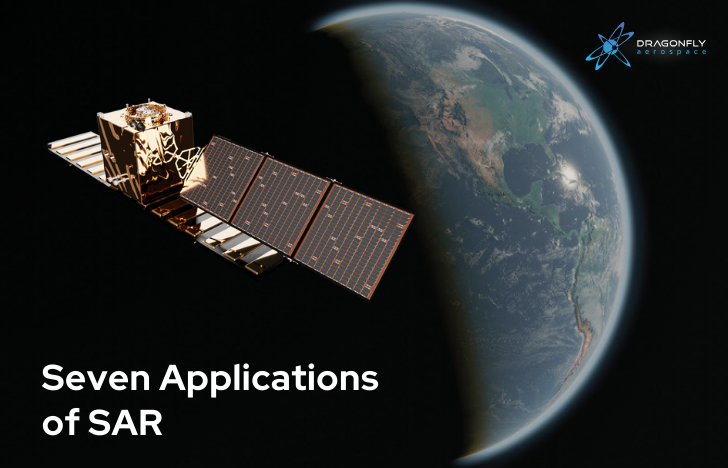
Synthetic Aperture Radar (SAR) technology has revolutionised our ability to observe and monitor the Earth’s surface.
With its unique capabilities, weather-independent operation, and day-night functionality, SAR can be used in diverse applications, providing valuable insights and contributing to advancements in environmental monitoring, disaster management, agriculture, defence, and more.
SAR satellite systems operate in different frequency ranges, including X-band, C-band, and L-band, each with its own benefits and limitations. The choice of frequency depends on the specific application and the desired image resolution.
For example, X-band SAR systems offer high-resolution images but are more susceptible to atmospheric disturbances. On the other hand, L-band SAR systems provide better penetration through vegetation and cloud cover, making them ideal for monitoring forested areas or mapping remote regions.
Seven applications of SAR technology
1. Environmental Monitoring
SAR is pivotal in monitoring environmental changes, including deforestation, land cover changes, and natural habitat assessments. It aids in studying soil moisture levels, vegetation health, and the impact of climate change on ecosystems. SAR is also instrumental in studying glaciers, ice caps, and polar regions. Its ability to penetrate through ice enables scientists to monitor ice thickness, study glacial movements, and monitor the effects of climate change.
2. Disaster Management
In disaster-prone regions, SAR assists in disaster management by providing rapid and accurate information during events, such as earthquakes, floods, and landslides. It aids in assessing impact and damage, identifying affected areas, coordinating emergency responses, and devising strategies for mitigation and prevention.
3. Precision Agriculture
Farmers and agricultural researchers benefit from SAR technology in crop monitoring, yield estimation, and assessing the health of agricultural land. This enables farmers to monitor crops, detect plant diseases, and optimise irrigation strategies to enhance food security and promote sustainable agricultural practices.
4. Defence and Security
Despite weather conditions, SAR’s ability to operate day or night makes it valuable for defence applications. It is used for reconnaissance, surveillance, and target detection, supporting military operations, and strategic planning. Additionally, SAR can detect and monitor ground movements, and identify hidden structures or infrastructure, providing essential intelligence information.
5. Oceanography and Maritime Surveillance
SAR monitors ocean currents, sea surface winds, and maritime activities and can aid in navigation, studying marine ecosystems, and even detecting illegal fishing activities.
6. Urban Planning and Infrastructure Monitoring
SAR contributes to urban planning by monitoring urban development, and infrastructure changes, and detecting subsidence in urban areas. It helps cities plan sustainable growth and assess the structural health of buildings and critical infrastructure.
7. Interferometric SAR (InSAR)
InSAR is a specialised SAR application used to detect ground subsidence, deformations, and elevation changes. This is crucial for monitoring critical infrastructure, such as dams and bridges, and understanding geological processes.
SAR technology has become a cornerstone in Earth observation, providing a unique and powerful perspective on our planet. Its ability to provide detailed images of the Earth’s surface, regardless of weather conditions or time of day, makes it a powerful remote sensing technique.
And, as technology advances, the impact of SAR on various fields is set to grow, promising a future where we can unlock even more of Earth’s secrets from the vantage point of space.
